The ultimate guide to fishes & fish life, including definition of a fish, fish bodies, types of fish and the life-cycle of a fish. Read on for a complete guide to ichthyology…
Index
What Are The Main Types Of Fish?
How Many Fish Species Are There?
What Is The World’s Smallest Fish?
Fish Life Cycle: Do Fish Lay Eggs?
Discover More About Fish With Active Wild
Love fish? See a range of fish gift ideas on this page: Fish Gift Ideas

What Is A Fish?
A fish is an aquatic vertebrate with fins and gills. The body of a typical fish is streamlined and covered in protective scales. Around half of all known vertebrates are fish, making fish the dominant vertebrate animals on the planet. Fish are found in both salt and freshwater habitats in most parts of the world.
Fish are craniates (i.e., they have skulls), and being vertebrates, have backbones, which are made of bones called vertebrae, through which a spinal cord passes.
Ichthyology is the scientific study of fish, and an ichthyologist is a scientist who studies fish.
Fish or fishes? The word "fish" can be both singular and plural. The word "fishes" can be used instead of the plural form when referring to multiple fish species.
Fish Ecology
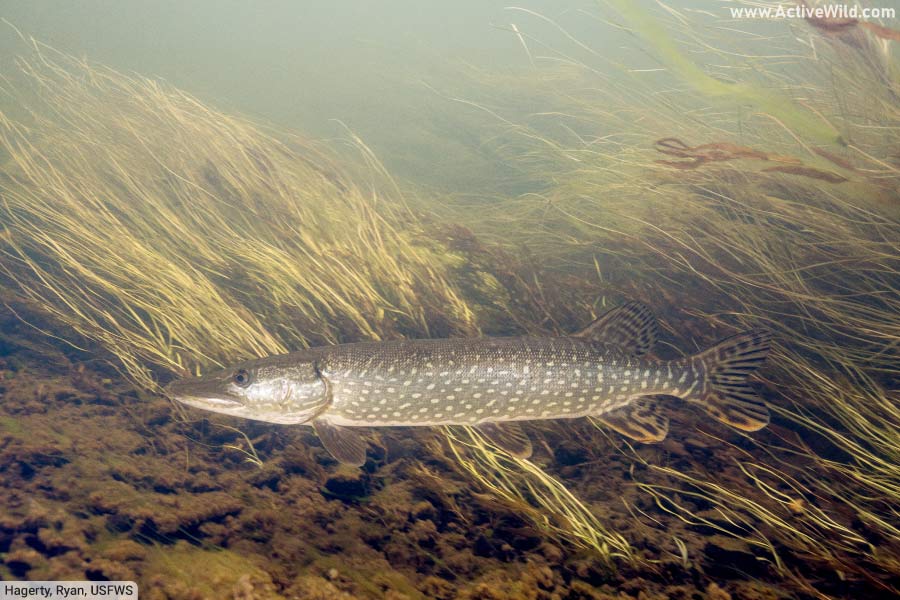
Fish are found in bodies of water all around the world, and are a vital part of their ecosystems. Fish are heterotrophs* that perform a number of roles in the food chain.
Depending on the species, fish may either be herbivores (primary consumers), omnivores (secondary consumers) and carnivorous apex predators (tertiary consumers), sitting at the top of the food chain with no predators of their own!
* Heterotrophs are organisms that don’t produce their own food, and therefore have to consume other organisms. Even plant-eating animals are heterotrophs, as they eat plants, which are also organisms.
You can find out more about ecosystems on this page: What Is An Ecosystem?
What Are The Main Types Of Fish?
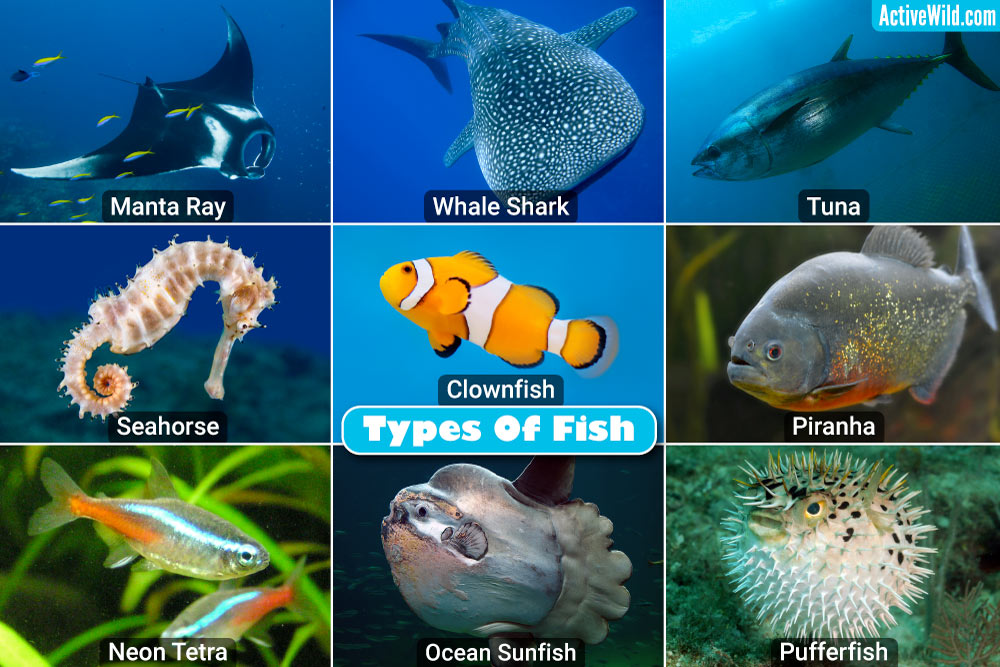
You can find out more the different types of fish on this page: Types Of Fish: Examples Of Fish From Around The World
There are three main types of fish: jawless fish, cartilaginous fish, and bony fish.
Jawless Fish (Infraphylum: Agnatha)

Jawless fish belong to the group Agnatha. As their name suggests, jawless fish lack jaws. Instead, they have round, sucker-like mouths.
There are two types of jawless fish alive today: hagfish and lampreys. Both have long, eel-like bodies.
Hagfish
There are around 80 species of hagfish, all of which are found in the sea. Although they lack true backbones, hagfish have very basic vertebrae, and are therefore considered to be vertebrates.
Lampreys
Around 40 species of lampreys are currently recognized (source). Some lampreys live in freshwater habitats, while others migrate between freshwater and marine environments. Many lampreys are parasites, attaching themselves to the bodies of other fish with their mouths and drinking their blood.
Cartilaginous Fish (Class: Chondrichthyes)
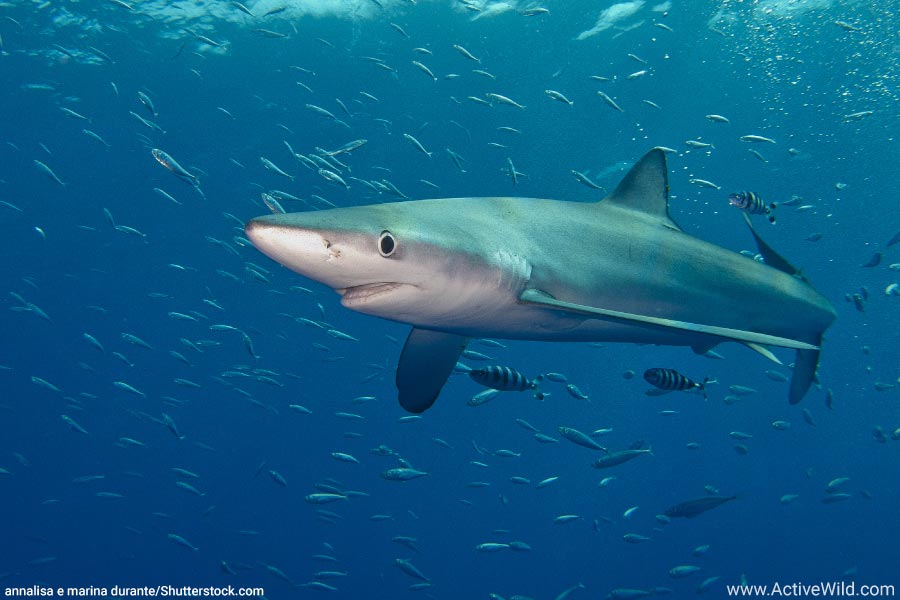
Cartilaginous fish belong to the class Chondrichthyes. Cartilaginous fish have skeletons made of cartilage – a smooth, flexible tissue – rather than of bone.
Most cartilaginous fish belong to the subclass Elasmobranchii, which is home to sharks, rays and skates.
(The other subclass of Chondrichthyes is Holocephali, which contains fish such as the deep sea ratfish and elephantfish.)
Sharks
You can find out more about sharks on these pages:
Shark Facts
Types of Sharks
There are around 530 species of sharks. A shark’s skin is covered with placoid scales, which are similar to teeth in their structure; one could almost say that a shark’s skin is covered in teeth. These scales provide protection and also reduce drag and reduces the sound made as the shark swims.
Sharks are equipped with electroreceptors that detect the electrical charges produced by the muscles of other fish. This “sixth sense” is just one of the adaptations that have heled sharks become supreme ocean predators.
Rays and Skates (order: Batoidea)
Rays and skates are fish with flat bodies and which propel themselves through the water by flapping their wing-like pectoral fins. Their mouths gills are located on the underside of the body.
Sting rays are a group of rays whose tails are equipped with a powerful stinging spine.
Electric rays are able to produce an electric charge, which is used both to capture prey and as self-defense against predators. The charge produced by some species is enough to knock a man off his feet, but is not lethal.
The naval weapons torpedoes are named after rays of genus Torpedo.
Bony Fish (Superclass: Osteichthyes)

By far the biggest group of fish is the bony fish. As the name suggests, the skeletons of bony fish are bone, rather than cartilage.
There are two main types of bony fish: ray-finned fish (class: Actinopterygii) and lobe-finned fish (class: Sarcopterygii).
Ray-Finned Fish (Class: Actinopterygii)
Nearly all bony fish (in fact, around 99% of all fish) are ray-finned fish. Ray-finned fish have fins that are supported by thin, bony spines. Examples of ray-finned fish include cod, salmon, tuna, pike, piranha, barracuda, minnow and walleye.
Lobe-Finned Fish (Class: Sarcopterygii)

There are eight living species of lobe-finned fish: six species of lungfish and two coelacanths. Lobe-finned fish have fleshy fins that project from the body on stalks.
At some point around 400 million years ago, the fleshy fins of a group of lobe-finned fish evolved into two pairs of limbs, leading to a new animal group: the tetrapods.
All terrestrial (land-living) vertebrates – including amphibians, reptiles, birds and mammals are tetrapods, and therefore evolved from lobe-finned fish.
Lungfish
Unlike nearly all other types of fish, lungfish are equipped with lungs and breathe air.
Coelacanths
Until relatively recently, it was thought that coelacanths had become extinct, along with the dinosaurs, at the end of the Cretaceous Period 66 million years ago. However, in 1938, a coelacanth was caught by a fisherman in South Africa, bringing coelacanths “back from the dead”!
How Many Fish Species Are There?
There are around 34,300 species of fish, making fish the largest group of vertebrates. Around half of all vertebrate animals are fish!
What Is The Biggest Fish?
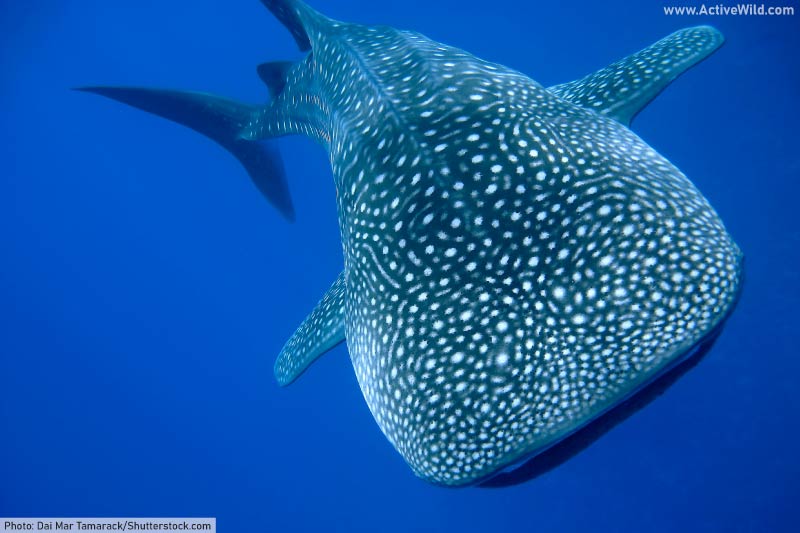
The world’s biggest fish is the whale shark, which has a maximum recorded length of 18.8 m / 61.7 ft.
The second-largest fish is the basking shark, which has a maximum recorded length of 12.27 m / 40.3 ft.
Unlike most sharks, which are active hunters, both the whale shark and the basking shark are filter feeders. Instead of chasing prey, these giant fish swim along with their mouths open and filter plankton from the sea water.
What Is The World’s Smallest Fish?
Several species vie for the title of world’s smallest fish. These include Paedocypris progenetica, an Asian member of the carp family, and the stout infantfish, Schindleria brevipinguis, a marine species found off of the coast of Australia. Both are well under 1 cm / 0.39 inches in length.
Parts Of A Fish

Gills
Like all animals*, fish require oxygen in order to produce energy. They also need to expel carbon dioxide as a waste product. Most fish perform this process with organs known as gills.
Gills are located behind a fish’s head. The gills of sharks and rays open to the outside of the body; those of other fish are hidden behind bony gill covers called operculum.
Scales
Fish scales are small plates that grow from the dermis – the mid-layer of skin. This differentiates them from reptile scales, which grow from the epidermis, the outermost layer of skin.
Fish scales may have their origins in teeth; the scales of sharks contain layers of enamel and dentine, both of which are tissues found in teeth.
The scales of most bony fish (and, therefore most fish) have bony ridges.
Fish Fins
Fish have several different types of fins. Below is a list of the different types of fish fins, and where they are found on a fish’s body. Not all fish have all of these fins.
Dorsal Fin
A fish’s dorsal fin is located on its back. Some fish have two or more dorsal fins, positioned in a line running along the center of the back.
One of the best-known of all fish fins is the dorsal fin of a shark, which is occasionally all that can be seen of the fish as it swims close to the surface of the water.
Pectoral Fins
Pectoral fins are located behind the head near the front of a fish’s body. A fish has a pair of pectoral fins, one on either side of the body.
The forelimbs of terrestrial animals (including our arms) evolved from pectoral fins.
Pelvic Fins / Ventral Fins
Pelvic, or ventral, fins are located near the base of a fish’s body, one on either side. In most fish they are located further back than the pectoral fins.
The hindlimbs of terrestrial animals (including our legs) evolved from pelvic fins.
Anal Fin / Cloacal Fin
The anal, or cloacal, fin is located behind the anus / cloaca on the base of a fish’s body.
Caudal (Tail) Fin
The caudal, or tail fin, is the fin located at the end of a fish’s tail. In most fish it is used to propel the fish through the water.
Adipose Fin
The adipose fin is a small, fleshy fin found on a fish’s back between the dorsal and caudal fins. It is absent on many types of fish, but can be found on salmon, trout and catfish.
Lateral Line
The lateral line is a line of highly-sensitive cells running along either side of a fish’s body. It is visible on most species of fish. With the lateral line, a fish can sense movement and vibration.
Fish Mouth Types
The shape, size and position of a fish’s mouth is often a good clue as to its diet. There are several different types of fish mouths.
Terminal Mouth

The most common type of fish mouth is the terminal mouth, which is positioned at the front of the head and which points forwards. Fish with terminal mouths may be carnivores that prey on other fish, or omnivores, capable of eating food from the surface or from the bottom.
Inferior Mouth
An inferior mouth opens downwards, with the upper jaw being longer than the lower jaw. Fish with inferior jaws are usually bottom feeders, feeding on algae, or bottom-living aquatic animals such as crustaceans and shellfish.
Superior Mouth
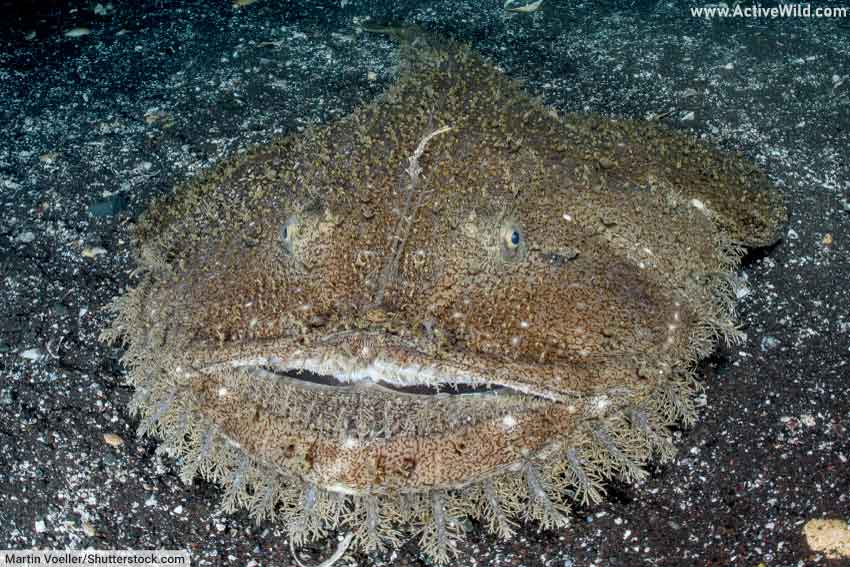
A superior mouth opens upwards, with the lower jaw being longer than the upper jaw. Fish with superior mouths are usually ambush predators, waiting for their victims to come within range before striking.
Protrusible Mouth
Many fish have protrusible mouths, which can extend forward to help the fish grab or manipulate food.
Eyelids
Fish don’t have eyelids (the eyelids of many terrestrial animals help keep the eyes moist; something a fish obviously has no need for). Some fish have a nictating membrane, a clear protective cover that is lowered over the eye for protection.
Do Fish Have Ears?
Fish have ears and are able to hear sound. Fish sense sound with otoliths, dense, bone-like structures in their skulls. With these, the fish is able to detect particle motion in the water. Fish are also able to hear with their lateral lines, and some fish detect sound with their swim bladder, which transmits changes in pressure to the brain.
Do Fish Make Sounds?
Although most fish lack lungs and are unable to make sounds as we do, several fish make sounds with other parts of their bodies in order to communicate. Sounds made by fish include a variety of grunts, croaks and clicks.
Some fish stridulate (produce sound by rubbing parts of the body together) by rubbing their bones or teeth together.
Others produce sound by oscillating the swim bladder.
How Do Fish Breathe?
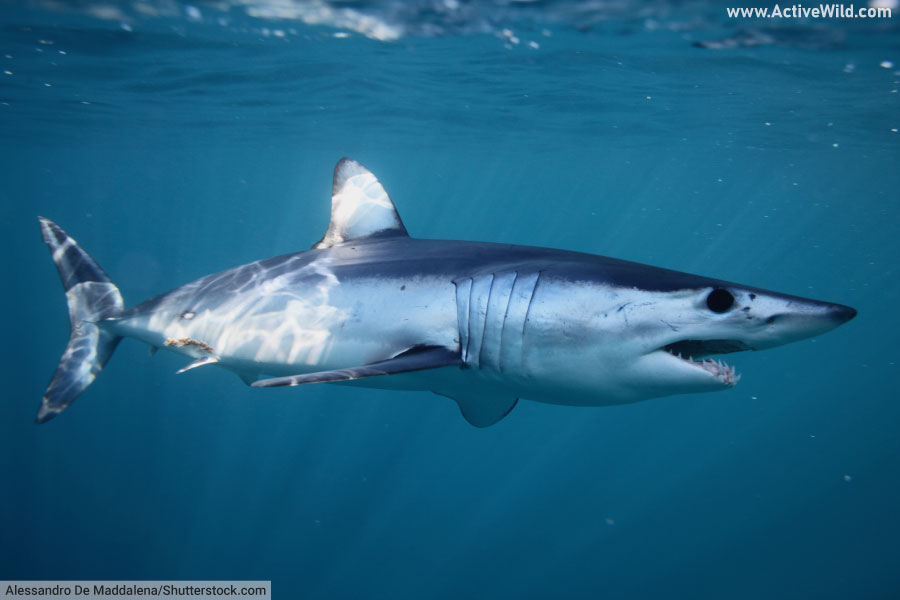
Gills consist of threads of tissue known as gill filaments, each of which has many folds (known as lamellae), which increase the surface area.
Running through each filament are thin blood vessels called capillaries. Oxygen in the water enters the fish’s blood, and carbon dioxide is expelled into the water, via these capillaries.
Fish breathe by pulling water into the mouth and expelling it over the gills.
* Only one known animal, a microscopic relative of jellyfish, does not produce energy via aerobic respiration.
Not all fish breathe with their gills. Lungfish have lungs, which they use either instead of or as well as their gills, coming up to the surface and breathing air.
Gars and the bowfin have “vascularized” swim bladders, which can be used as lungs. This allows the fish to live in poorly-oxygenated water.
Some fish, including mudskippers and some eels, are able to absorb oxygen through their skin, while others, such as catfish, absorb oxygen via their digestive tracts.
Are Fish Cold Blooded?
The majority of fish are cold-blooded (ectothermic), meaning their body temperature is the same as that of their surroundings.
Some fish, including the opah, tuna, the great white shark and other sharks of family Lamnidae, are warm-blooded, with a body temperature higher than that of their surroundings.
Fish Life Cycle: Do Fish Lay Eggs?

The majority of fish are oviparous, meaning that the females lay eggs that develop and hatch outside of the body. The eggs of fish are usually fertilized externally by the sperm of the males. Usually, many thousands of eggs are produced, with just a tiny fraction ever reaching adulthood.
Oviparous fish usually hatch in an underdeveloped state, and carry a yolk sac from the egg that provides nutrients until the fish is able to feed itself.
The eggs of oviparous sharks are fertilized internally, with sperm being transferred to the female’s cloaca (an opening on the underside of the body) via an appendage known as a “clasper”, which is located behind the male’s pelvic fins.
Fish may also be ovoviviparous or viviparous.
The eggs of ovoviviparous fish are fertilized internally and hatch within the mother’s body prior to being born.
In viviparous fish, the eggs are fertilized internally, and the developing embryo receives nutrients via an umbilical cord rather than from the egg.
Fish rarely exhibit any kind of parental care; the newly-hatched or newborn fish are usually left on their own!
Fish That Aren’t Fish

Several other animals have the word “fish” in their names, but are not true fish. These include starfish, jellyfish, shellfish and cuttlefish. Starfish are echinoderms, jellyfish are cnidarians, and shellfish and cuttlefish are mollusks.
Cetaceans, a group of marine mammals that includes whales, porpoises and dolphins, are occasionally mistaken for fish. Although cetaceans have steam-lined bodies and fin-like flippers and tails, they are not related to fish (mammals and fish are separated by millions of years of evolution).
Unlike true fish, cetaceans lack gills, and have to regularly come to the surface in order to breathe.
Discover More About Fish With Active Wild
You can find out more about fish on the following pages:
Types Of Fish: Examples Of Fish From Around The World
Fish Gift Ideas: Fish Themed Gifts For Fish Lovers
Are Sharks Mammals? Is A Shark A Mammal Or A Fish?
Types Of Sharks: Shark Species List With Pictures & Facts
Shark Life Cycle & Shark Reproduction: How Do Sharks Reproduce?


